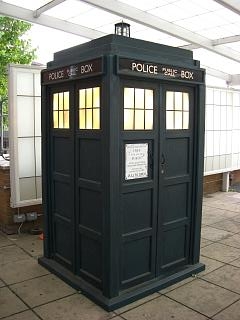As I've indicated numerous times before, I'm very keen to make my Power Utility, Dominion Virginia Power, aware of my intent to use an Electric Vehicle so that they can better prepare for the load I would be drawing and be able to provide sufficient power at times optimal for charging. Fortunately, like most EV drivers, my intention is to charge my car overnight, when the demand for electricity is already at its lowest, which allows my PU to balance generation between the peak daylight hours and the nighttime hours when my car draws energy.
In return for this, I've asked my PU to set me up to be charged a Time-Of-Use rate which would reduce the cost to charge the EV when it's charged over night versus during the daylight hours. Back in February, I reported that Dominion Virginia Power was proposing two new pilot program rates specifically for electric vehicles which would use new smart meters and allow the calculation of rates based on Time-Of-Use. Excited, I sought more information and was able to calculate a $200 savings by switching over to either of the new EV-based TOU rates.
Dominion Virginia Power EV Rates Revealed (Part 2)
I explained how rates are calculated back on Valentine's Day because I ♥ calculating this kind of stuff.1 And although the rate for Fuel has gone up slightly since I wrote Part 1 — it's now 3.289¢⁄kWh — all the calculations remain the same.
So take for example the Nissan LEAF with its 24 kWh battery pack. If we estimate the LEAF's wall-to-wheel efficiency to be 3⅓ mi⁄kWh (5.364 km⁄kWh), with a 38 mi (61 km) commute each way, this represents 22.8 kWh (2 × 38 mi ÷ 3⅓ mi⁄kWh) or 95% of the 24 kWh pack on the LEAF. I then assume the weekend driving consists of more local, around town driving equivalent to exactly half of the weekday driving or about 38 mi (61 km) per day or 11.4 kWh.
In addition to each of these, it's important to remember that the EVSE also draws power to maintain its status and remain in a ready state. My EVSE only draws 5 Watts to maintain its ready state — EVSEs with more Internet connectivity and wireless capabilities will draw more power than a plan nuts and bolts EVSE like my Clipper Creek CS-100.
Since I plan to only charge my vehicle over night and be out of the house around 5:00 am, I set my calculations to assume I can finish charging by that time. This would be different if I could charge my car at work, but with a 3.3 kW charger on the Nissan LEAF, it will take 6.09 hours (22.8 kWh ÷ 3.3 kW) to charge the LEAF during the weekdays and 3.45 hours (11.4 kWh ÷ 3.3 kW) on the weekend.
The Missing 4 cents revisited
Once the total electrical energy required for charging the EV is known, we can calculate the cost for Transmission and Fuel rates and Use, Consumption and County Tax, as well as the various Distribution and Supply riders to get the base price for charging our EV. These rates are summarized in the following table:
| Name
| cost in ¢⁄kWh
| Annual Cost
|
|---|
| Rider C1: Peak Shaving
| 0.009
| $0.65
|
| Rider C2: Energy Efficiency
| 0.044
| $3.16
|
| Rider S: Virginia City Hybrid Energy Center
| 0.280
| $20.11
|
| Rider R: Bear Garden Generating Station
| 0.117
| $8.40
|
| Rider BRC: Base Rate Credit
| -0.1322
| -$9.48
|
| Rider T: Transmission
| 0.616
| $44.24
|
| Fuel Charge Rider A
| 3.289
| $236.21
|
| Sales and Use Surcharge
| 0.056
| $4.02
|
| Consumption Taxes (Tier 1) (< 2.5 MWh)
| 0.155
| $7.68
|
Consumption Taxes (Tier 2) (2.5 MWh ≤ x < 50 MWh)
| 0.099
| $2.20
|
| Consumption Taxes (Tier 3) (≥ 50 MWh)
| 0.075
| $0.00
|
| Fairfax County Tax (Min 56¢; Max $4)
| 0.605
| $0.00
|
| Totals
| 4.417
| $317.19
|
|---|
Now, the Fairfax County Tax will typically hit the $4 maximum without the EV so the EV won't add to that tax. Also, for the Consumption Taxes, many months my household never goes over 2.5 MWh. Generally, I still do come close to if not going over in the warmer months of June, July, August and September, even after going to R-49 attic insulation but not in the winter since I have methane-based (natural gas) heating. In my calculations, I use my actual historical household data to compute the Consumption Taxes, so in months where the usage does go over 2.5 MWh, I calculate my EV's electricity rate accordingly using the Tier 1 or Tier 2 Pricing as necessary.
Total energy usage [is] about 7,138 kWh.
Now, to compute my total electricity usage, I take the average usage per day using a weighted average of 5⁄7 × 22.8 kWh each weekday and 2⁄7 × 11.4 kWh each weekend day for an average of 19 19⁄35 kWh per day. If we multiply that by the number of days in each month, we can get an estimate of how much energy we use per month and if we multiply by 365.2425 days per year, we have the total energy usage of about 7,138 kWh. This is the value multiplied by each of the rates in the above table to get the total cost per year.
In the case of the Consumption Taxes, this further breaks down by my estimates to about 4,957 kWh taxed at Tier 1 and about 2,225 kWh taxed at Tier 2. The Consumption Tax part of the Total in the table above is weighted using these estimates as a percent of the total electricity usage annually.
Taking these numbers, we can see a total cost of $317.19 to run my Nissan LEAF not including the base rate schedule. Thus, no rate schedule can come to a total less than $317.19 per year. However, depending on the Rate Schedule chosen, the additional cost could vary between $150 and $350.
The Base Rate Schedules
Dominion Virginia Power customers have 3 basic choices when it comes to their base electricity rate: Schedule 1, Schedule EV and Schedule 1EV. Each of these is outlined below.
Most Dominion Virginia Power residential customers are under this rate schedule. Thus, these numbers represent no special EV rate and just plugging your car in under the normal rate schedule. Since the monthly fee of $7 is already covered by your current electric bill, this can't count toward the cost to charge the EV since you have to pay it either way. For Distribution and Supply, Dominion Virginia Power breaks the bill up into summer and off-summer months as well as usage under 800 kWh and usage beyond that. In the case of the EV, my house never uses less than 800 kWh per month so I'll always be paying the above 800 kWh rate for my EV. Thus, the rate for Distribution is 1.26¢⁄kWh. The rate for Supply varies throughout the year so from June to September it's 5.773¢⁄kWh and 0.02927¢⁄kWh the rest of the year.
Thus, the total base Distribution cost is $90.49 for the entire year and $138.49 for Supply for the Summer months and $139.99 for Supply the rest of the year. The total Supply annually is therefore $278.48 for a total of $368.97 per year under Schedule 1. Adding this to the fixed result, we get the total annual cost to run your EV under this rate schedule of $686.16.
Technically, the Schedule EV rate plan isn't a primary rate schedule. Instead, a dual meter is set up at your household with the main residence still under Schedule 1 and a dedicated line to EV metered using the Schedule EV rider instead.
Because Schedule EV is a Time-Of-Use rate, the time at which electrical energy is drawn becomes significant. Fortunately, this is easy to calculate because we know from above how long it takes to charge the LEAF under my scenario, and thus how much power is required each hour. When the EV is charging, since it's using a 3.3 kW charger, it will require that much power per hour and thus use 3.3 kWh per hour in use. You also have the base EVSE power of 0.005 kW which comes to 0.005 kWh per hour, each hour.
In the case of Schedule EV, there is an additional Distribution charge for the second meter of $2.90 per month for a total of $34.80 per year. The Distribution and Supply rates are then given by:
| Hours
| Distribution rate in ¢⁄kWh
| Supply rate in ¢⁄kWh
| Net Cost
|
|---|
| 01–05 (Super-Off-Peak)
| 0.000
| 0.684
| $31.74
|
| 05–06 (Off-Peak)
| 2.520
| 1.429
| $0.07
|
| 06–22 (Peak)
| 2.520
| 10.256
| $3.73
|
| 22–01 (Off-Peak)
| 2.520
| 1.429
| $99.12
|
For simplicity, I've show the results for the entire period blocks, which generally fall into the following categories: 01–05 is full 3.3 kW charging, 05–06 is only the EVSE, as well as 06–22 and finally 22–01 is used to charge the EV during weekdays since at 3.3 kW the LEAF required more than 4 hours to charge to 95% from 0. For that final block, it breaks down into no charging on weekends and 2.09 hours during the weekdays, where the rest of the charging occurs in 01–05 on both Weekdays and Weekends.
The Distribution and Supply results together for each of the time blocks yields $134.67. Add to that the monthly Distribution charge and we get $169.47, less than half the cost for base Distribution and Supply under Schedule 1. Because the final bill is a combined bill between the household and the EV meters, the taxes are cumulative, so if under Schedule 1 the Tier 2 Consumption Tax threshold be reached for the household, it would also do so under Schedule EV. The final result is a grand total of $486.66.
One final thing to note is the $99.12 spent from 22–01 could be avoided if the LEAF had a 6.6 kW charger instead of the cheap 3.3 kW charger it currently has. With this charger, it wouldn't need to draw electricity in the more expensive off-peak period; all the needed energy could be added and metered during the Super-Off-Peak time for a mere $48.87 during that period and only $0.22 for the 22–01 Off-Peak. Thus, the total cost with a 6.6 kW Charger would be $404.89, an over $80 per year in savings.
Schedule 1EV is a household rate plan that replaces the Schedule 1 with a special Time-Of-Use rate specifically tailored to EV owners. As such, it is far more complicated than anything I've discussed thus far and as such I shall hold off to discuss this in its own post.
Conclusion
As you can see, there's a lot of savings that can be made by just switching to one of the 2 experimental EV rate programs. I'm personally looking very much forward to participating in the program; won't you join me? Just sign up here and be a part of the future!
1Okay, technically the posting date was just a coincidence but sometimes I like to embellish to make these posts more readable.
2For Schedule 1, Schedule EV and Schedule 1EV.

.jpeg)



